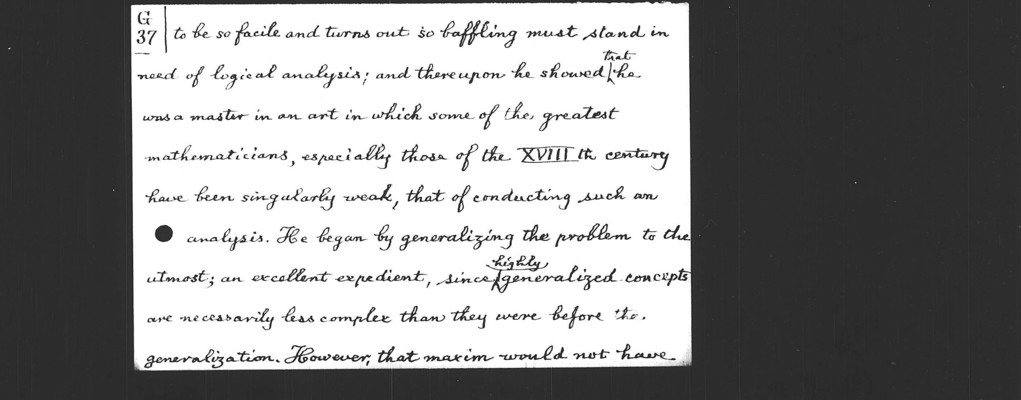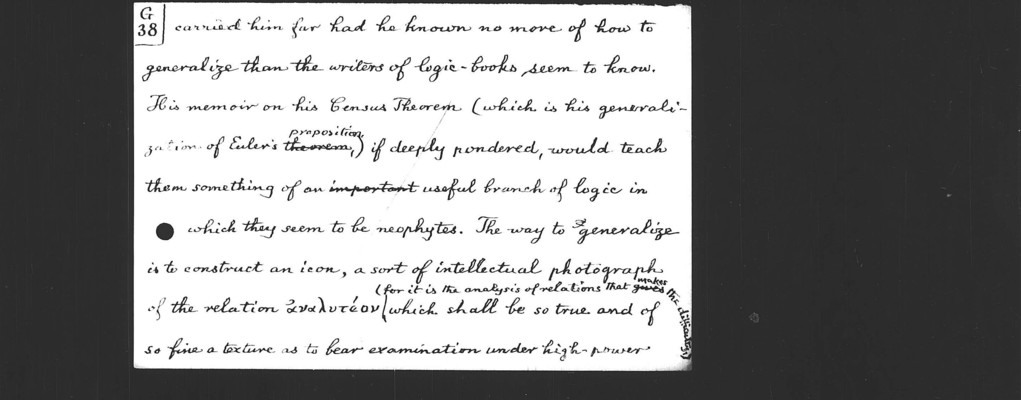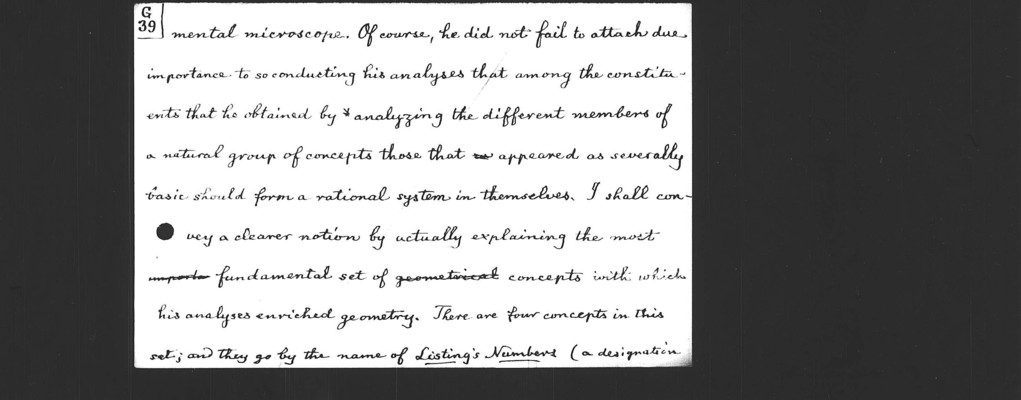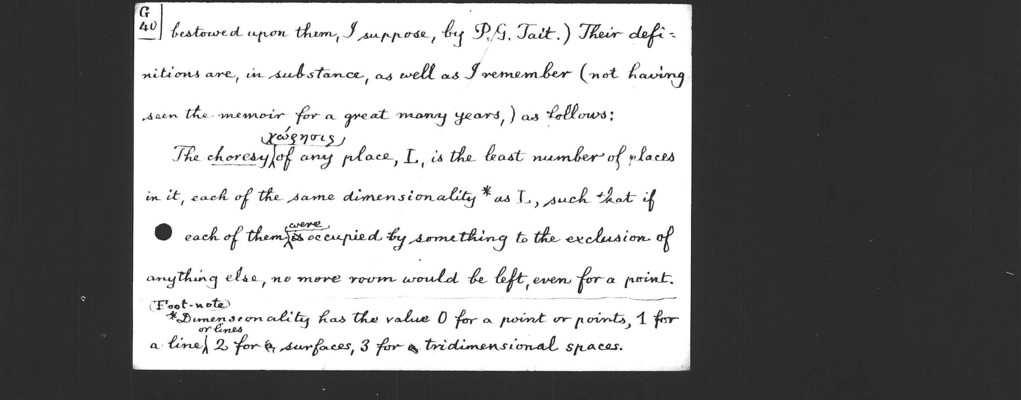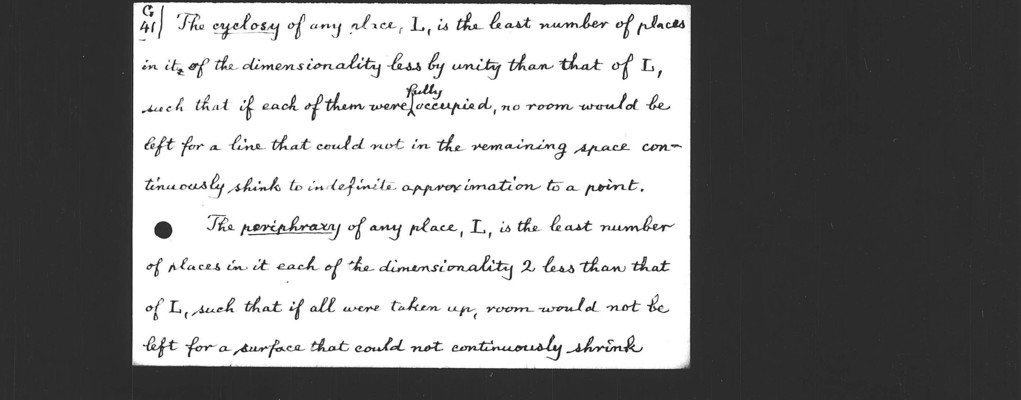Pages
36
G37
to be so facile and turns out so baffling must stand in need of logical analysis; and thereupon he showed that he was a master in an art in which some of the greatest mathematicians, especially those of the XVIIIth century have been singularly weak, that of conducting such an analysis. He began by generalizing the problem to the utmost; an excellent expedient, since highly generalized concepts are necessarily less complex than they were before the generalization. However, that maxim would not have
37
G38
carried him far had he known no more of how to generalize than the writers of logic-books seem to know. His memoir on his Census Theorem (which is his generalization of Euler's theorem proposition,) if deeply pondered, would teach them something of an important useful branch of logic in which they seem to be neophytes. The way to generalize is to construct an icon, a sort of intellectual photograph of the relation άναλυτέον (for it is the analysis of relations that gives makes the difficulty,) which shall be so true and of so fine a texture as to bear examination under high-power
38
G39
mental microscope. Of course, he did not fail to attach due importance to so conducting his analyses that among the constituents that he obtained by analyzing the different members of a natural group of concepts those that appeared as severally basic should form a rational system in themselves. I shall convey a clearer notion by actually explaining the most importa fundamental set of geometrical concepts with which his analyses enriched geometry. There are four concepts in this set; and they go by the name of Listing's Numbers (a designation
39
G40
bestowed upon them, I suppose, by P. G. Tait.) Their definitions are, in substance, as well as I remember (not having seen the memoir for a great many years,) as follows:
The choresy (χώρησις) of any place, L, is the least number of places in it, each of the same dimensionality* as L, such that if each of them were is occupied by something to the exclusion of anything else, no more room would be left, even for a point.
(Foot-note) *Dimensionality has the value 0 for a point or points, 1 for a line or lines, 2 for surfaces, 3 for a tridimensional spaces.
40
G41
The cyclosy of any place, L, is the least number of places in it, of the dimensionality less by unity than that of L, such that if each of them were fully occupied, no room would be left for a line that could not in the remaining space continuously shrink to indefinite approximation to a point.
The periphraxy of any place, L, is the least number of places in it each of the dimensionality 2 less than that of L, such that if all were taken up, room would not be left for a surface that could not continuously shrink
